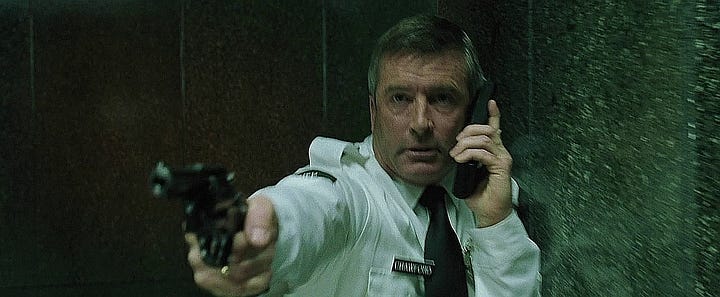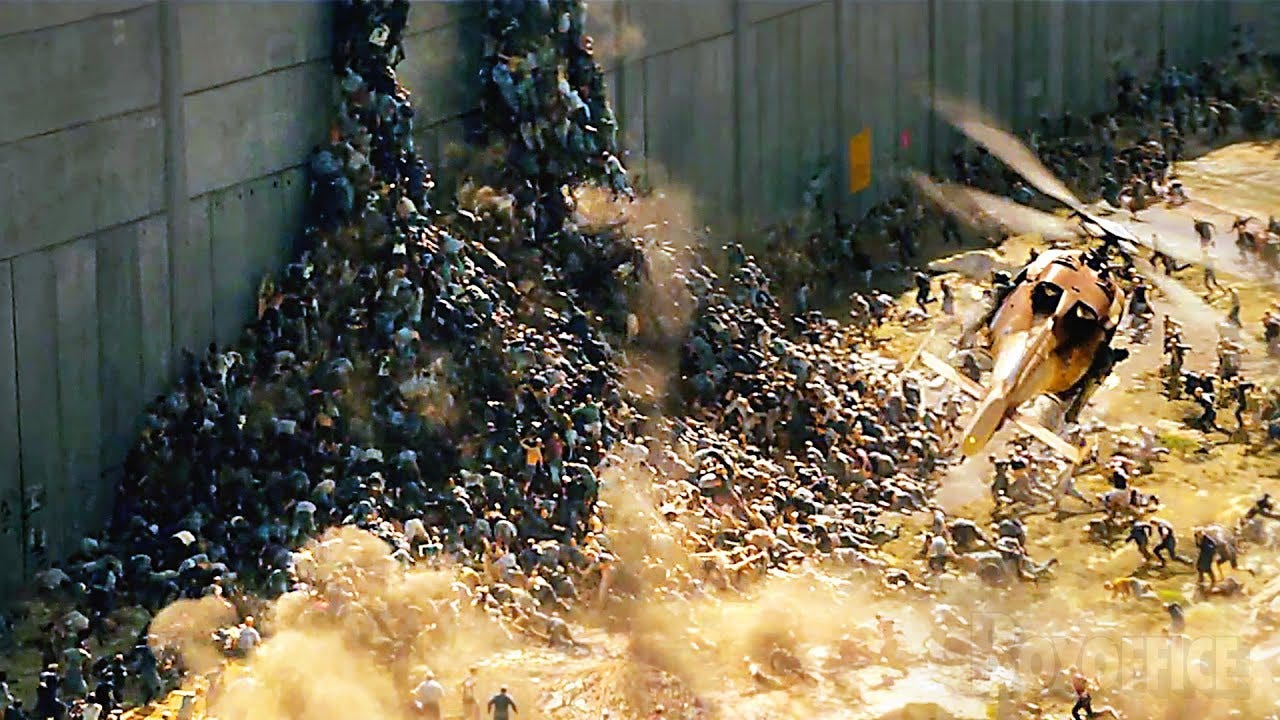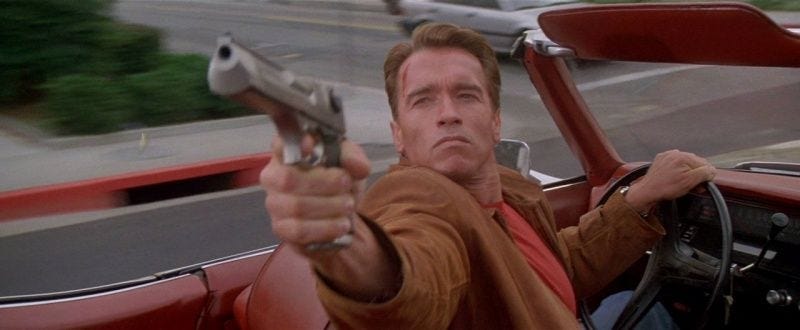IDF Gun Culture
Israel's Two Most Iconic Guns Define Its Most Iconic Institution
For extremely obvious reasons, the Israeli military has been at the center of attention over the past month. While mainstream media would have shown this military’s actions in Palestine as an inevitability not notable beyond the current news cycle in the past, that is changing. Social media has made the dynamic unsustainable, with demands for peace proving to be more than a weekend fad. Israel’s PR operation has grown extremely frustrated that it is losing the war for hearts and minds across the globe. As journalists covering the conflict from inside Gaza gain millions of followers on Instagram, coordinated campaigns like “Kidnapped From Israel” are sitting at around 15,000 followers despite extensive media coverage.
The scale of brutality being inflicted by Israel on Gaza’s civilian population is almost too much to comprehend. Despite this, what isn’t hard to comprehend is the scale of brutality being inflicted on Hamas, Israel’s supposed target. That’s because Israel has had a relatively hard time defeating the group despite almost a month of preparation for a ground invasion. The IDF was caught completely off guard on October 7th and continues to show extreme caution on the ground as international pressure continues to mount. Videos coming out of Gaza from Israel’s side don’t tend to show the IDF pulling off anything that stunning.
Israel’s bargain with its citizens was that a militarized society would ensure safety and that any threats to that safety would be swiftly dealt with by its elite army with minimal casualties. That hasn’t happened on October 7th and the IDF’s inability to be a fully functional military became very clear. The near-mythical status of the IDF is slowly fading away as concrete successes are rarer than ever. Even if the IDF has a better K/D ratio on Hamas by the end of this, it will still have fundamentally failed to work.
We should be looking at the IDF in the context of two different guns produced by Israel. One from its time as a lean mean killing machine, another from its current state as a bloated frustrated killing machine. As you’ll see, these guns also correspond with America in more ways than you might think.
The Uzi Era
The time period from the First Arab-Israeli War to the Lebanon War of 1982-85 is what I call the Uzi Era of the IDF. An iconic gun manufactured in Israel, the Uzi entered service in 1951 and filled the role of a cheap, utilitarian submachine gun for the IDF into the 1980s. Its boxy appearance is thanks to the inexpensive sheet metal it’s manufactured with. This sheet metal philosophy was one it shared with the AK-47, a then-contemporary assault rifle produced by the Soviet Union also famous for its ‘quality of quantity’. Israel was much closer diplomatically to the USSR during this point, and both could appreciate the value in anything that could quickly put bullets down range on a budget. The Uzi design proved popular all around the world and became the most produced submachine gun in history by the time Israel began to phase it out in the 1980s.
The pop culture aspect cannot be overstated either, with the Uzi showing up in action movies, particularly American ones. In The Terminator, Arnold Schwarzenegger even asks for one by name. It’s a great gun for movies, with its small size and iconic shape taking up less of the screen than other automatic weapons allowing directors who want to quickly convey what kind of hardware their characters are about to use. The unique design makes it a natural go to for video games as well, letting the player instantly know what their gun will shoot like before they even pick it up. Later, the Micro Uzi would begin appear in on many screens, in a smaller size but with the same iconic appearance.

During the Uzi Era, Israel proved itself capable of winning conventional wars on the merits of its commanders and the use of relatively evenly matched military hardware. Israel was poor relative to Western Europe, and its economy was kept afloat by foreign donations and reparations from West Germany. German reparations alone composed 87.5% of Israel’s income in 1956. Still, the IDF had to remain strong both to deter hostile neighbors and as an integral part of civilian life in Israel.
After a string of victories against its neighbors culminating in the 1967 Six Day War, Israel had proven to itself as a militarized state. The world saw a scrappy country of Holocaust survivors didn’t just hold off the entire Arab world, it beat them. Corresponding with its drawn out, humiliating defeat in Vietnam, America looked to Israel and its elite military as an investment in victory. In fact, a spike in US military aid to Israel corresponded with the end of the Vietnam War.
With its new toys, Israel now possessed all the trappings of a Prussian style military powerhouse. For example, the first kill by an F-15 (then America’s new top of the line fighter jet) was flown by an Israeli pilot. For awhile World War II era bravado was alive and well in the ‘Middle East’s only democracy’. By the 1980s, the Uzi began to show its limitations for combat in the desert, and was slowly phased out of frontline service in favor of the American M-16. It was the 1980s when another iconic gun appeared in Israel, like the rest of Israel’s new hardware, it originated stateside.
The Desert Eagle Era
Firepower
Low Recoil
Accuracy & Reliability
Versatility
Striking Looks
According to Magnum Research in the early 1980s, these are five reasons to shoot their new .357 pistol: the Desert Eagle. You’re almost certainly familiar with the Desert Eagle, it doesn’t take a gun nut to recognize one. Much like the Uzi, it shows up in a wide variety of movies, TV shows, and video games. As opposed to the snub nosed revolvers often toted by common on screen thugs, the Desert Eagle is a weapon of war with an imposing frame. While the Uzi is about being subtle on-screen with a painted black body that can blend in with any goon’s trench coat, the Desert Eagle is front and center with a chrome finish. The Desert Eagle has a profile similar to the classic American M1911, but is noticeably larger, occupying more of the screen than any other pistol. Designed originally for .357, a version in .44 (then the highest caliber of commercial pistol ammunition) was offered a mere two years after the Desert Eagle’s initial release.


Most important for the current moment, however, is the origin of this hand cannon. Designed by Magnum Research in Fridley, Minnesota, the Desert Eagle found an actual manufacturer in the creatively named Israeli Military Industries. Israel’s defense industry was at it’s apex during this time, with its 65,000 employees accounting for 20% of the total manufacturing output of the country, this meant no more sheet metal receivers for its guns and an upgrade in quality. Israel was also experiencing a boon in PR among the American public, with support rising sporadically throughout the 1980s. With a swelling of Jewish pride after the Six Day War, more Americans than ever began departing for Israel. US military aid to the country also spiked, and Israel became more closely integrated with America as a strategic and economic partner.
From this environment, Israel’s new gun was finally released in 1982. Production remained in Israel for over 20 years before Magnum Research began to slowly move its operation stateside again before leaving Israel completely in 2019. Their reasoning likely wasn’t geopolitical, more due to labor costs and market proximity. You may have noticed that I haven’t mentioned the Desert Eagle actually being used in Israel or anywhere outside of movies. There’s a reason for that.
The Desert Eagle is comically impractical as a firearm. Compared to the current standard issue pistol for the US Army, the Beretta M9, the Desert Eagle is slightly longer, but almost twice as heavy. When a weapon is meant to be drawn from its holster as quickly as possible, the prospect of whipping something that weighs more than a MacBook from your hip is not a pleasant one. The Desert Eagle doesn't hold even half as many rounds as the M9, and kicks like a horse. When firing, there’s a good chance it’ll be a .50 caliber bullet leaving the barrel, a round that was created specifically for the Desert Eagle to be the new highest pistol caliber on the market. The Desert Eagle is not cheap either, with the minimum base model going for about triple the M9’s price. Ultimately, the Desert Eagle is as much a firearm as it is a statement.
Now, the Desert Eagle was never seriously meant to be used by militaries (although that hasn’t stopped Poland according to some reports). So why compare it to the Uzi? It’s because the Desert Eagle possesses many of the same qualities that the modern IDF does. The IDF as an institution stretches far beyond the battlefield and relies on more than just weapons to keep itself powerful.
Much like the Desert Eagle, the IDF is extremely oversized. The IDF is currently conducting its invasion of Gaza with what appears to mostly be tanks, infantry fighting vehicles, and armored bulldozers often with little infantry support. It seems like the idea is to reduce casualties, which has worked, but at the expense of meaningful progress on the ground, or under it. Israel is well aware that Hamas uses a network of tunnels to move around Gaza, but continues to use tanks without infantry support, at least, not enough to prevent Hamas troops from recording themselves running up to these tanks, placing explosives, and running back to safety, before detonating the explosives.
It’s clear that the IDF is out of its element when fighting an actual war, much like the Desert Eagle. Sure, it knows how to drop bombs, and the troops are going where they’re ordered, but the clock is ticking on Israel’s goal of freeing its hostages. I don’t mean to be an armchair general, but I can’t help but notice a correlation between the lower casualties and a failure to complete the set objective. Don’t take it from me, an article in The Times of Israel titled “The IDF’s war on Hamas is going better than it expected… for now” gives the game away. Half of the article is spent praising the surprisingly low casualties, until the conceit is given away by author Lazar Berman “The IDF has to reach its objectives before international pressure becomes so great that it has to agree to a ceasefire”.
Hostages complicate this current conflict more than one might already think. A notable development on how Israel thinks about hostages began the mid 1980s when the so called ‘Hannibal Directive’ was conceived. This order was first given in 2000, and according to one IDF soldier, can be summarized as “You will open fire without constraints, in order to prevent the abduction”. Essentially, Israel would much rather have its soldiers come home in boxes than come home after negotiations. These negotiations are seen by Israel as humiliating, and often result in the release of hundreds of Palestinian hostages by Israel. With so few hostages actually being released, and the intensity of the bombing, it’s hard to not think Israel is invoking this informal doctrine on a large scale. Much like the Desert Eagle, the IDF sacrifices practicality to preserve its image.
The final aspect, and the one most readers are familiar with, is how the IDF looks. Just like the Desert Eagle, the IDF looks cool, but relies on a good deal of polishing and mostly originates from the United States. The IDF puts on a good show, the reputation of its servicewomen is well known by everyone, from your liberal aunt to your selectively non-misogynist uncle. Sometimes Israeli state social media will have some fun as well. Remember when the official Twitter account of Israel implied Jesus was the son of God in a tweet, essentially questioning the validity of Judaism as a religion so that they could get a dig in at user @TheTweetOfGod for saying Jesus was Palestinian. Other official Israeli social media accounts do a better job when it comes to not accidentally converting to Christianity. A glance at the pre October 7th IDF Facebook page shows pictures of its photogenic soldiers, while celebrities like Gal Gadot bring attention to Israel by not being able to do any accent to save her life. One might even remember seeing actual IDF soldiers depicted in a blockbuster movie. For example: fighting zombies during this extremely subtle scene in World War Z.

So far, these aesthetics are the best thing Israel can hope to maintain. The IDF babes probably aren’t taking too many casualties, and aid from America is en route. What this aid actually does remains to be seen exactly, but one report says that the so called ‘Iron Beam’, an anti-missile system that uses high powered lasers to destroy rockets in mid air, will be getting funding. Lasers are cool, I’ll give them that, but it doesn’t make up for the other reputation the IDF has gotten a lot more of over the past month. Despite an initial outpouring of international support, Israel has quickly grown more isolated as world leaders begin to urge more restraint and protests continue to pressure these leaders.
There isn’t a real way out of this inefficiency conundrum for the IDF. October 7th was the breaking points for many Israelis, with polls showing 76% want Netanyahu to resign. The collapse of any ‘rally around the flag’ effect shows how deeply flawed the IDF is at being a military. As flashy as hardware like the Iron Dome and AI operated turrets are, they have proven inadequate at maintaining the status quo that Israelis had been promised. It will take years for public trust and international opinion to reach pre war levels, during which time Israeli society will have some tough questions to answer in regards to how much of the IDF has actually served to protect them and how much of it is just big clunky toys that make American jobs. The IDF brought a gun to a knife fight, but got cut before it could fire the first shot.
If you want to donate to help the people of Gaza, this is a link to Anera, a reputable charity I’ve donated to in the past https://www.anera.org/where-we-work/palestine/gaza/




